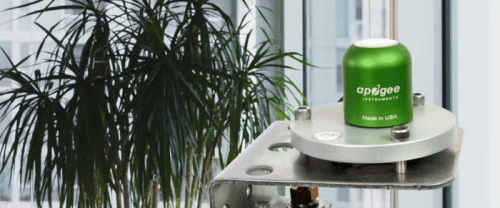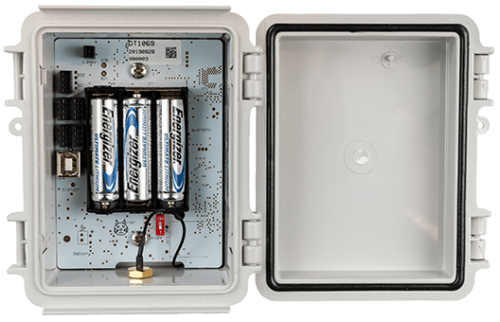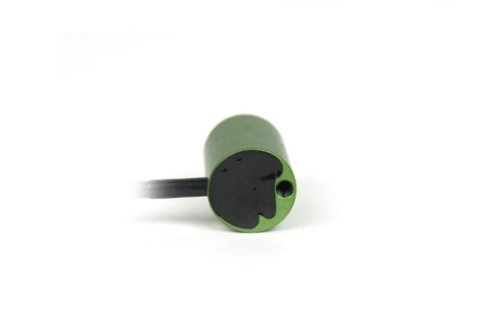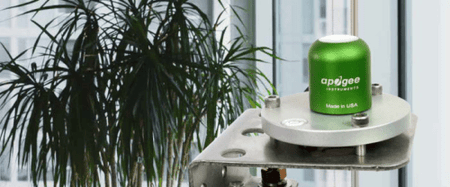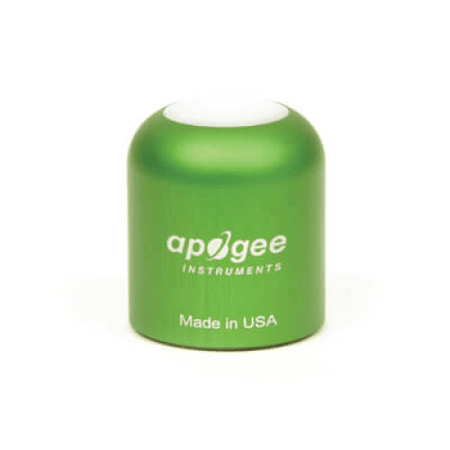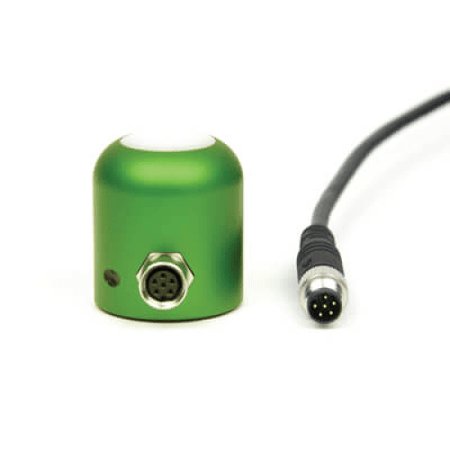Illuminance Monitoring Station - IC-SNiP-LUX-A




The SNiP-LUX is a 'Sensor Node Integrated Package' for LoRa, LoRaWAN or FSK communication of real-time measurements of illuminance, for continuous environmental monitoring (including plant light relations).
The base SNiP-LUX integrates 1x AD-NODE and 1x SE-100 Photometric Sensor to a site's unique network, communication and power requirements.
The SE-100 Photometric Sensor is a self-powered lux sensor that measures Illuminance in the range of 0-200 Klux over a 0 to 200 mV range. Typical applications of photometric sensors include measuring light levels for human vision in offices, sports arenas, hospitals, museums and more.
AD-NODE: For High Resolution Analogue and Digital Sensors
The AD-NODE is designed for those requiring precision in their analogue and digital measurements. With a 24-bit ADC, the AD-NODE supports two RTDs, a 0 to 10V with compressing range and a 4 t o20mA input. Each of the four dry-contact digital inputs is capable of simultaneously sampling at 1 kHz, with periodic reporting. Settings on the device can be altered remotely via LoRaWAN or locally via USB.
Features:
- LoRaWAN low-power long-range connectivity
- 2x 24-bit RTD
- 1x 24-bit Voltage input (0-10 V with compressing range)
- 1x 24-bit 4-20 mA
- 4x 32-bit dry-contact counting digital inputs, 2 x digital outputs
- 400 Hz 3-Axis Accelerometer
- 3 x AA Lithium Energizer battery
- Fully reconfigurable via LoRaWAN downlinks
SE-100 Photometric Sensor
The SE-100 Photometric sensor is a self-powered lux sensor with a range of 0-200 Klux over a 0 to 200 mV range. The sensor features a rugged, aluminium housing that is fully-submersible and is built to withstand harsh conditions. The sensor cable includes an IP68 marine-grade stainless-steel cable connector 30 cm from head to simplify sensor removal and replacement from permanent installations for maintenance and calibration. Typical applications of photometric sensors include measuring light levels for human vision in offices, sports arenas, hospitals, museums and more.
Specifications
- Output (Sensitivity): 0.001 mV per lux
- Calibration Factor: 1000 lux per mV
- Calibration Uncertainty: +/- 5 %
- Output Range: 0 to 200 mV
- Measurement Range: 0 to 200 klux
- Measurement Repeatability: Less than 0.5 %
- Long-term Drift: Less than 2 % per year
- Non-linearity: Less than 1 %
- Response Time: Less than 1 ms
- Spectral Range: CIE 1931 luminous efficiency function
- Field of View: 180 degrees
- Directional (Cosine) Response: +/- 2 % at 45 degrees; +/- 5 % at 75 degrees
- Temperature Response: Less than -0.1 % per C
- Operating Environment: -40 to 70 C; 0 to 100 % relative humidity
- Dimensions: 30.5 mm diameter, 36.6 mm height
Our Reviews
Recently Viewed
Instrument Choice will respond in 3 business hours
Get in touch with our expert scientists Instrument Choice.
In less than 3 business hours you will have an answer from our expert scientists.
Our Australian experts have access to a huge range of products from national and international suppliers.
If for any reason you have trouble using this form please email the following address and your enquiry will still receive a response from a scientist within 3 business hours: scientists@instrumentchoice.com.au
Instrument Choice will respond in 3 business hours
Get in touch with our expert scientists Instrument Choice.
In less than 3 business hours you will have an answer from our expert scientists.
Our Australian experts have access to a huge range of products from national and international suppliers.
If for any reason you have trouble using this form please email the following address and your enquiry will still receive a response from a scientist within 3 business hours: scientists@instrumentchoice.com.au
